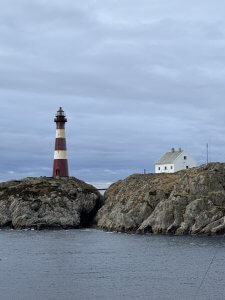A west coast mind: the rise of Feddie
Facing you as you leave Bergen airport is a huge sign carrying the city’s name, complete with a question mark.
Is this Bergen?
What is Bergen?
What does Bergen mean?
This apparent existential agony doesn’t fit with my experiences of Norwegians, who all seem very sure of themselves and their identity.
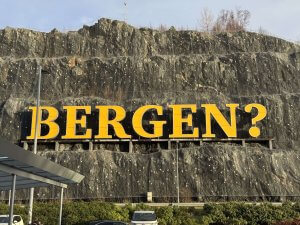
I ponder this as we had north, the traffic easing as we escape the city until it seems that we are the only car on the road. There’s time to stop for the obligatory pølse (hotdog) at a service station before we turn westwards.
Why do I feel so at home here? The air, the widening sky, the opening out? Bare rock knuckles through heather, the low sun sharps outlines before it slips under a blanket of cloud the blue grey of a gull’s back. Out there, beyond low-lying islands, is Shetland.
The ferry slides silently out of the terminal at Sævrøy over a flat calm sea. We stand on the deck in the bluster of wind, watching a sea eagle being mobbed. We reach Fedje in the gloaming, yellow lamp light coming on in the red or blue painted wooden houses.
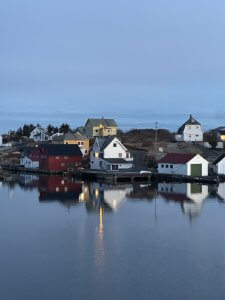
Perched on bare rock, they seem both timeless and precarious, an unchanging old place, but one in which the waves will eventually wash everything away. Being in the west does things to your mind.
The ferry docks. Immediately to the right is the distillery. Feddie Ocean Distillery, to give its full title, was founded by Anna Koppang who converted a brewery (which previously had been a fish-processing plant) into its current function. Wholly female owned, its 1,000 investors will only permit men to do the same when gender equality is achieved in business and society.
‘We’re owned by women, who are building something for the next generation of women,’ says Feddie’s blender, Martin Tønder Smith. ‘It’s a movement and I’m proud to be part of it.’
It is currently the only certified organic distillery in Norway, which means that the barley has to be sourced from Denmark. After mashing, it’s fermented for 72 hours before the wash is distilled in a single pass through a hybrid still.
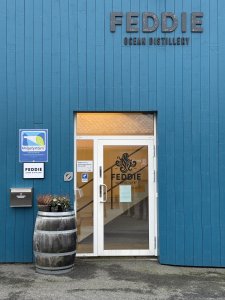
There’s a trio of new releases in front of us. Batch 3 (47.2%), aged in ex-Bourbon (and one oloroso) cask is bright and direct, filled with pear blossom, cut flowers, white bread and a touch of lime. The palate has a silky texture, some chamomile, and white tea, then becomes more mineral-accented: brine, rock pools. From experience, it makes a great Highball.
The Distillery Edition is the same whisky, but at 57.2%. Here, that American oak becomes more noticeable, adding weight and more overt vanilla/lemon cream, while also bringing Feddie’s bracing sea breeze qualities further forward. Everything has been magnified: more salinity, melon and pear, pithy citrus. With water (and the wise drinker will add it) the oils coil and almost freeze in the glass.
A Limited Release (52%) which is due this autumn, is the most restrained and dry. There’s more fresh barley notes here, and a hint of smoke from Islay quarter casks. The taste is like licking tears from someone’s cheek.
Again, water is a useful addition in order to cut through the steeliness and allow sweeter, oilier elements to emerge, becoming more effervescent, accompanied by gentle fruits. It has the cool, freshly-washed sensation which you get in so many Nordic whiskies.
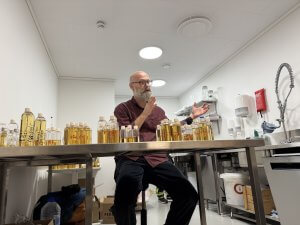
The briny character is appropriate give it’s made on a rock in the ocean, but one theory as to where it comes from is intriguing. ‘The water source adds character,’ says Martin. ‘We’re using surface water which runs through bogs. In summer, the water can be 16˚ and we struggle with condensing.
‘In autumn and winter there’s storms and the water turns salty. The pH changes which makes it great for fermentation, but it corrodes the equipment. But you have to work with your conditions. The whisky has to be about where we are from.’
It strikes me that there is something wider at work here. No-one knows where ‘saltiness’ comes from. Projection because we’re on the shoreline? No, because it is there. The ‘coolness’ of Nordic whiskies? Is that just me bundling up everything I know, or think I know, or have heard about a country, and imposing that on to the whisky?
Maybe, but there is something about the precision at work here that reminds me of Japanese whiskies, but while their making is linked with that country’s traditional crafts, here there seem to be parallels with architecture, design, music: the folk jazz of Nils Økland, Frode Haltli, the sax of Jan Garbarek. Overtones, stark lines, space. Clarity. The whisky is a manifestation of a sensibility.
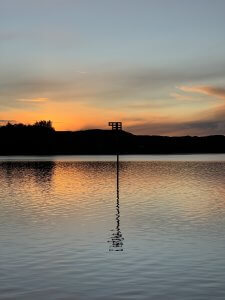
It is like language. You carry its sounds and rhythms with you. If you are a Norwegian living in Scotland, you will still think like a Norwegian. You cannot make Scotch in Norway. You can only make Norwegian whisky. Embrace it.
Making is one thing, aligning with location is fantastic, but now comes the hardest part – selling it and the story. Feddie’s first two batches sold out immediately in Norway. The whisky’s character obviously was important, but so was the decision to launch with a core product, at volume (Batch 3 comprises 7,900 bottles) and at a price that was affordable to all (750NOK/£50).
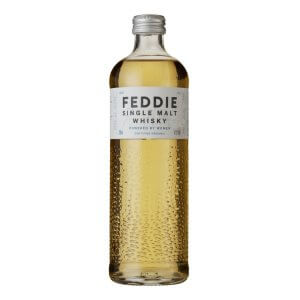
‘There’s been a massive single cask trend in the past 15 years,’ say Martin. ‘We want to bring it back to regular whisky, highly drinkable and affordable – something priced for regular people.’
Now it’s time for export. Sweden first, then the UK. ‘We make whisky,’ he says. ‘That means having a consistent core range and making decisions for the next 10 or 20 years. The local market is so small that without export it makes no sense, but this is not a sprint. We have a great story, but if whisky not as good as it can be, we will be nothing in the world.’
The next day we clear our heads with a tour of the island, the road ending at the lighthouse on its west coast. The grey sea. There’s space to think and dream out here. There’s a poster advertising for a keeper…
No-one has marked out the road
you are to take
out in the unknown
out in the blue.
This is your road.
Only you
will take it. And there’s no
turning back.
And you haven’t marked your road
either.
And the wind smoothes out your tracks
on desolate hills.
(Your Way, Olav Hauge (tr Robin Fulton)
